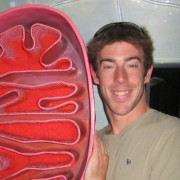Addiction, Author Interviews, CMAJ, Mental Health Research / 09.09.2015
Psychedelic Medicine Explored for Addiction and Mental Health Issues
 MedicalResearch.com Interview with:
Dr. Evan Wood MD, PhD, ABIM, FRCPC, ABAM Diplomat Professor of Medicine, UBC
Canada Research Chair in Inner City Medicine
Co-Director, Urban Health Research Initiative
Medical Director for Addiction Services, Vancouver Coastal Health
Physician Program Director for Addiction
Providence Health Care
Medical Research: What is the background for this study? What are the main findings?
Dr. Wood: Drugs with the potential to produce altered states of consciousness were once the focus of intensive study in the 1950s and 1960s. While promising, this field of research has been dormant for decades but is now re-emerging as an area of intensive investigation and showing real potential as a new therapeutic paradigm in addiction medicine and mental health. While in its infancy, this is expected to be an area of much study in the coming years.
Medical Research: What should clinicians and patients take away from your report?
Dr. Wood: Psychedelic medicine is in its infancy and not ready for implementation in clinical practice. Clinicians and the community of individuals suffering from addiction and other concerns will hopefully support this area of research so that critical information on impacts and safety can be gathered.
(more…)
MedicalResearch.com Interview with:
Dr. Evan Wood MD, PhD, ABIM, FRCPC, ABAM Diplomat Professor of Medicine, UBC
Canada Research Chair in Inner City Medicine
Co-Director, Urban Health Research Initiative
Medical Director for Addiction Services, Vancouver Coastal Health
Physician Program Director for Addiction
Providence Health Care
Medical Research: What is the background for this study? What are the main findings?
Dr. Wood: Drugs with the potential to produce altered states of consciousness were once the focus of intensive study in the 1950s and 1960s. While promising, this field of research has been dormant for decades but is now re-emerging as an area of intensive investigation and showing real potential as a new therapeutic paradigm in addiction medicine and mental health. While in its infancy, this is expected to be an area of much study in the coming years.
Medical Research: What should clinicians and patients take away from your report?
Dr. Wood: Psychedelic medicine is in its infancy and not ready for implementation in clinical practice. Clinicians and the community of individuals suffering from addiction and other concerns will hopefully support this area of research so that critical information on impacts and safety can be gathered.
(more…)






















